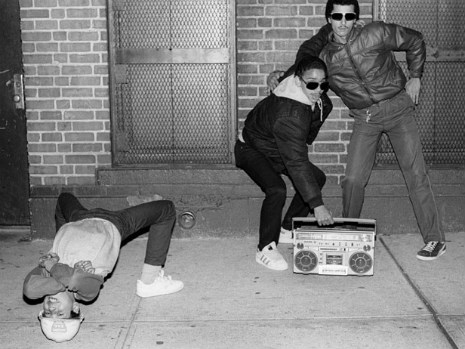
Boomboxes are kind of an of-a-certain-age thing, but if you were sentient in between the mid ‘70s and early ’90s, they were as common as stereo consoles and component systems. “Portable,” technically, inasmuch as they took batteries and weren’t literally furniture, they were huge, cumbersome radio/cassette deck combos with large stereo speakers. The classic stereotypes associated with the things were mulletted suburban rock ‘n’ roll scumbags tailgating with boomboxes in the trunks of their cars playing music at hateful and disruptive volumes, either oblivious to or give-a-fuckless about the public nuisance they were creating, or soul/disco/hip-hop fans with massive afros, strutting down crowded city streets with boomboxes on their shoulders playing music at hateful and disruptive volumes, either oblivious to or give-a-fuckless about the public nuisance they were creating. Their total ubiquity in breakdance culture (owing to their portability, naturally) led to the unfortunate and highly problematic nickname “ghettoblasters.”
By the late ’80s, a boombox could have as many features as a stereo component system—sophisticated EQs, detatchable speakers, dual cassette decks for dubbing (HOME TAPING IS KILLING MUSIC, YOU GUYS), even remotes. By the early ‘90s, when the boxy metal units were phased out in favor of less distinctive (and way less awesome) rounded black plastic ones with CD players, they often even replaced consoles as home stereos of choice for many listeners as cassettes grew in popularity over vinyl. And those feature-loaded boxy metal ones are the models that have, in the internet era of ever-increasing granularity in collecting, developed a cult.
Keep reading after the jump…







